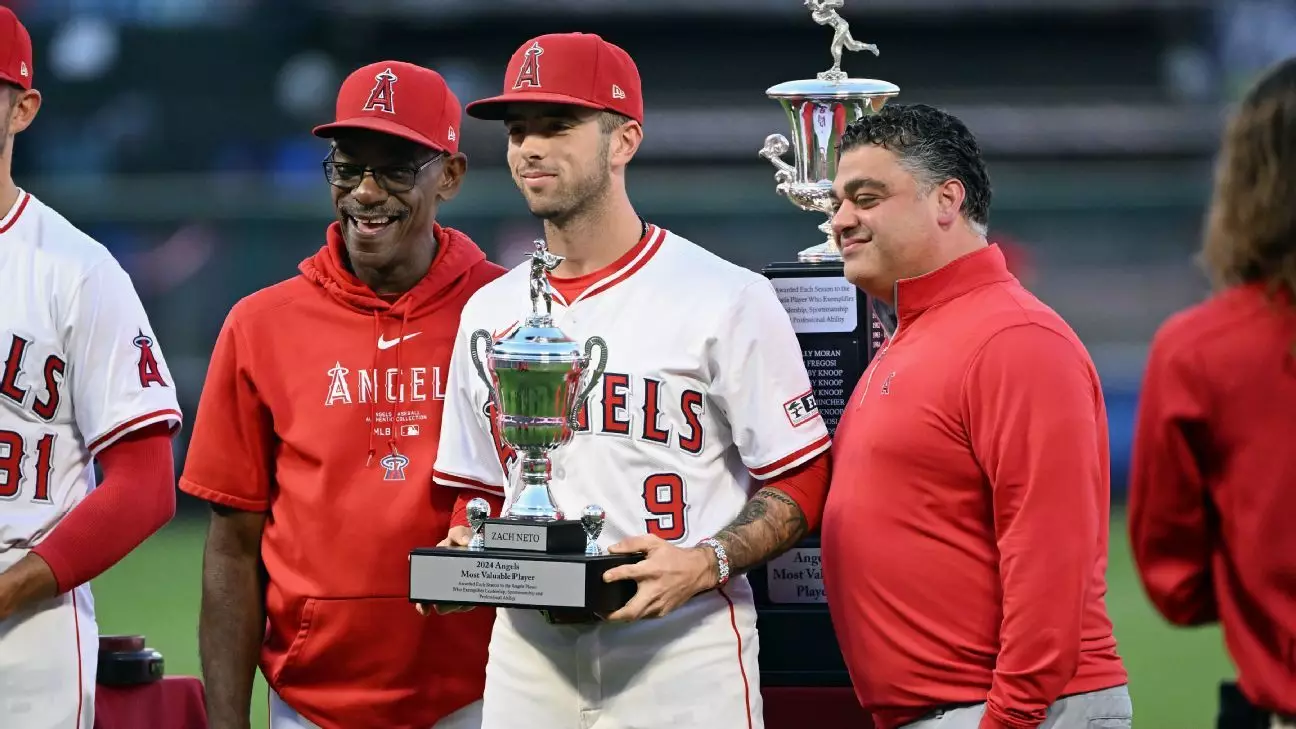As the crisp autumn air settles in and the leaves begin to fall, the world of sports shifts its focus primarily towards the NFL, NBA, and NHL. While these leagues dominate the headlines, the fantasy baseball offseason is quietly unfolding behind the scenes. As analysts and enthusiasts scan for relevant news that might impact future drafts, it’s essential to sift through the noise to identify developments that could shape the fantasy landscape as we look ahead to the 2024 season.
Injuries inevitably create ripples in the fantasy baseball pond, and a recent injury report raised eyebrows across the fantasy community. The name on everybody’s lips is Zach Neto, who dazzled in 2024 with an impressive performance, smashing 23 homers and swiping 30 bases in a full season. However, his late-season shoulder injury, which required surgery, casts a shadow over his availability for the 2025 Opening Day. The Los Angeles Angels appear to be bracing for potential downtime, acquiring Scott Kingery and signing Kevin Newman, which signals they may not be counting on Neto for a full workload early on.
For fantasy managers, this could spell trouble: will Neto return to his prior form, or will he take longer to recover than anticipated? The situation is delicate and warrants careful monitoring. If Neto is sidelined even into April, it could affect roster strategies significantly, prompting managers to seek replacements or adjust their draft plans considerably. His owners must prepare for potential disappointment, and it serves as a crucial reminder of how injury risks can alter perceived value in our rosters.
The Tampa Bay Rays are set to swap their long-time home at Tropicana Field, a venue known for its pitcher-friendly dimensions, for the Steinbrenner Field in Tampa. While casual fans may dismiss this move as a mere change of the scenery, fantasy managers must closely consider the implications. Steinbrenner Field will introduce new factors such as weather elements—sunshine and rain—which were largely controlled indoors at Tropicana.
Historical performances from the Single-A Tampa Tarpons suggest this shift could lead to more favorable hitting conditions. While dimensions may appear similar on paper, the environmental changes may give hitters an edge. As such, discerning managers should not only evaluate individual player statistics but also recognize how venue shifts may alter offensive and defensive dynamics. It’s not about drastically redesigning draft boards, but rather about strategic adjustments based on these new conditions.
Last season, one of the most surprising success stories came from Ethan Miller, who transformed from a promising prospect into an All-Star closer with the Oakland Athletics. Saving 28 games while maintaining a respectable 2.49 ERA, Miller captivated many in the fantasy realm. However, as the Athletics ponder their future with him, the conversation has shifted toward the ideal role for him moving forward—closer or starter?
There’s a valid debate about the direction fantasy owners should take with Miller. While his ability to close games solidifies his value in saves, it’s essential to explore the potential upside should he transition back into a starting role. Given Miller’s successful track record when conditioned as a starter, he might possess even higher upside if he can stretch his innings beyond the typical relief appearance. Fantasy managers need to weigh the inherent risks linked with a reliever’s volatility against the potential for immense value should he reclaim a starter’s role. Prioritizing pitchers with dual profiles like Miller can present exciting opportunities, but careful consideration is warranted.
As the offseason progresses, savvy fantasy baseball players must remain vigilant about the unfolding changes that could affect roster construction and overall strategy. By analyzing injury reports, venue changes, and player roles while separating noteworthy updates from mere noise, managers can make more informed decisions ahead of the next draft. This period of downtime—marked by quieter headlines—provides an invaluable chance to prepare, strategize, and ultimately seize opportunities in the upcoming fantasy baseball season.


Leave a Reply